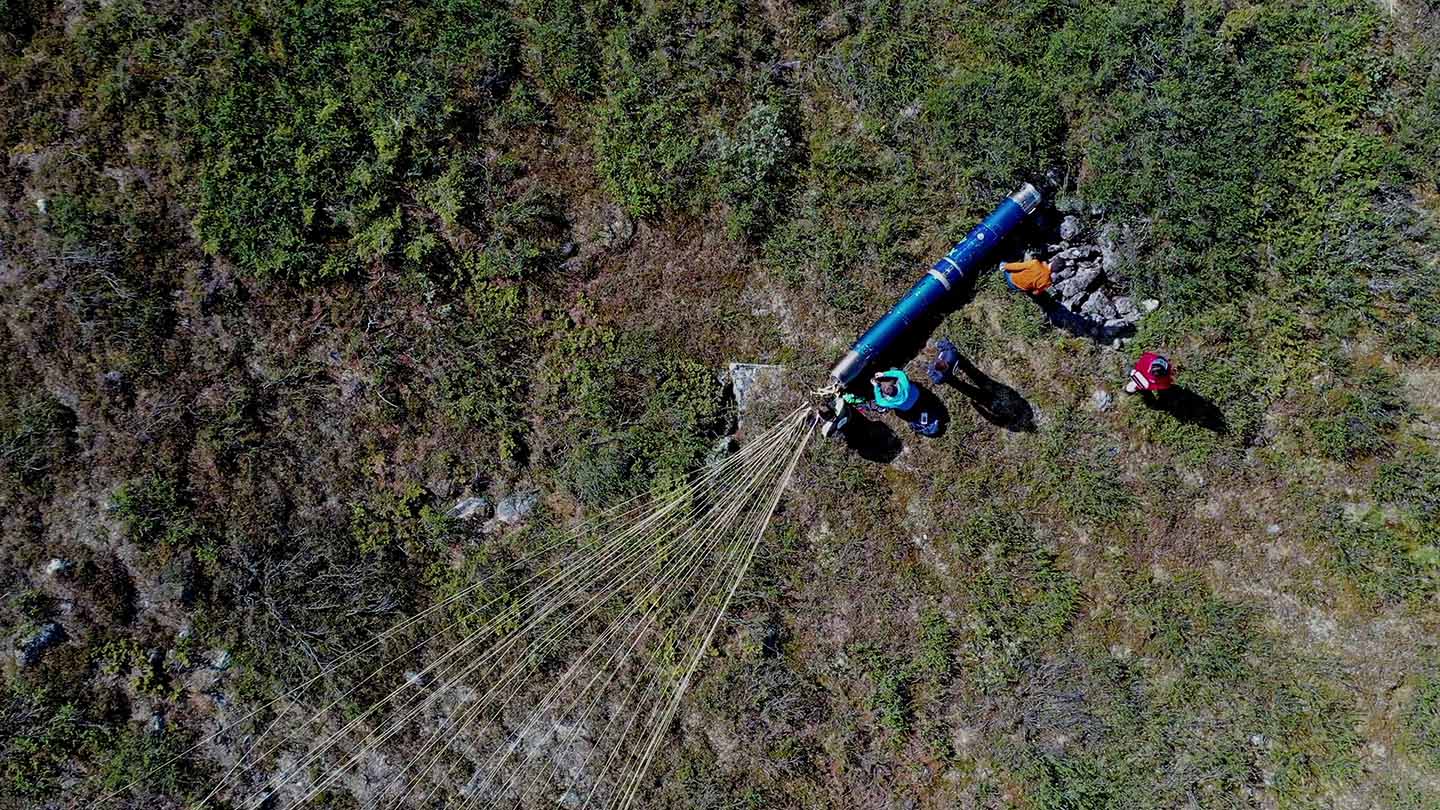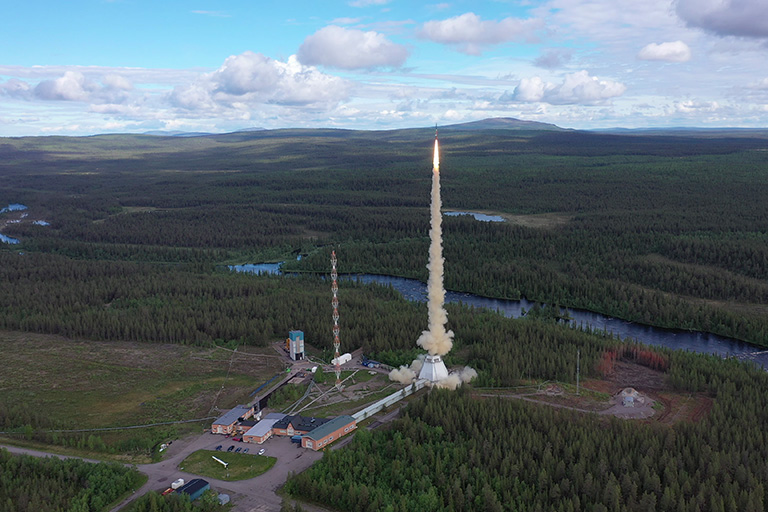Rockets and Balloons
MASER 14
The MASER 14 vehicle, with its 400 kg payload, propelled by a VSB-30 rocket motor to an apogee of 260 km, provided more than 6 minutes of free-fall conditions.
MASER serves as a system for performing experiments under short-duration microgravity flights, providing the scientific community with an excellent research tool and full European access to space.
Read about all the experiments below.
Image: Launch of MASER 14 on 24 June 2019, Photo: DLR

General information
| Launch site | Esrange Space Center, Sweden |
| Launch date | June 24, 2019 at 06:52 UTC |
| Rocket type | VSB-30 Image: Recovery of MASER-14 payload. Credit: DLR |
| Nominal diameter | 557 mm, 17 inch |
| Apogee | 245 km |
MASER 14 Payload
ARLES consists of several experiments, one of which aims at creating smart coatings in space through evaporating droplet.
The ARLES experiment, financed by ESA (science coordinator Dr. Carlo S. Iorio, Université Libre de Bruxelles, Microgravity Research Center) investigates how liquids evaporate in microgravity. The research focuses on understanding how liquids can best be used to transfer heat and could help improve thermal control systems in space.
Moreover, one liquid tested includes graphene nanoparticles, a material which is of particular interest among the scientific community. The experiment will also increase understanding of how nanoparticles in the fluid coat the surface as the liquid evaporates. This technique could have potential applications as smart coating for membranes, electrodes, sensors, to mention a few.
Verification of new technology for drainage of satellite propellant tanks.
The objective of the STT technical demonstration experiment of Space Solutions Co., Korea (PI: Hosung Yoon, Space Solutions Co.) is to study the drainage of a liquid from a pressurized tank equipped with liquid surface tension and capillary system designed to collect the liquid at the outlet of the tank.
The beginning of things! DUST experiment is part of a series of investigations aiming at understanding how new star systems in the Universe are created from atoms via cosmic dust.
The DUST experiment (PI: Yuki Kimura, University of Hokkaido) within the field of cosmology aims at obtaining physical parameters – such as surface free energy and sticking probability – of titanium carbide dust, and elucidate their formation processes in gas ejected from a carbon-rich asymptotic giant branch star. The PI reports that dust particles were successfully reproduced and optical data was obtained under the microgravity conditions. The experiment will provide initial data for sciences based on carbonaceous return samples by HAYABUSA 2, OSIRIS Rex and MMX in 2020 and IR data obtained by future observatories such as SPICA and James Webb Space Telescope. The experiment is carried out by the Hokkaido and Braunschweig Universities and is financed by JAXA and DLR.
X-Ray monitoring, Gradient Furnace)
Why some metals are better than others – the experiments in this field are meant to shed some light on this central question in materials science.
The ESA financed XRMON-GF2 experiment (science team coordinator Henri Nguyen-Thi IM2NP, Université Aix-Marseille) investigates the directional solidification of an Al-Cu alloy by in-situ real-time X-ray radiography. Special attention is on the aspects of nucleation, segregation, and impingement.
The XRMON program contains a series of in-situ radiography experiments on metallurgical processes related to solidification phenomena under microgravity and terrestrial conditions, so as to investigate how metal alloys form and to be able to improve the materials used in our everyday life. A number of experiments have already been carried out in the framework of this program on MASER 11, MAXUS 8, MAXUS 9, MASER 12, MASER 13 and two parabolic flight campaigns. The current experiment provides valuable supplementary information relating to grain refinement.
Mammal stem cells in space
As a late add-on to the payload, an experiment, performed within the Uppsala University Biomedical Centre and containing a set of neural crest stem cells, took part of the flight. They were successfully retrieved and delivered to the science team after the flight of six minutes of microgravity conditions. The results will help to understand how space flight condition can affect known properties of neural stem cells and even induce novel features in such cells.
PI: Professor Elena Kozlova. Uppsala University Biomedical Centre, Department of Neuroscience, Laboratory of Regenerative Neurobiology.
The PI explains: “The aim is to translate basic stem cell research to clinical application. Neural crest stem cells, so-called boundary cap (bNCSC), generated in our laboratory, have the potential to differentiate to a variety of neural cell types. They also demonstrate robust survival in different conditions and unique capacity to support other cells. Thus, they induce proliferation of insulin-producing beta cells, protect beta cells and motor neurons from oxidative stress, and increase survival of ALS affected motor neurons.
These features make them attractive components for creating complex 3-D tissues and organs for regenerative medicine. bNCSCs were placed in Maser 14 alone or incorporated into supportive 3-D printed biomaterial, provided by CELLINK AB. In parallel bNCSC with the same conditions were tested in Lucerne University of Applied Sciences and Arts. The cells will be investigated with regard to their viability, proliferation, differentiation and functional properties.
Auction via Tradera in Sweden. Read more

